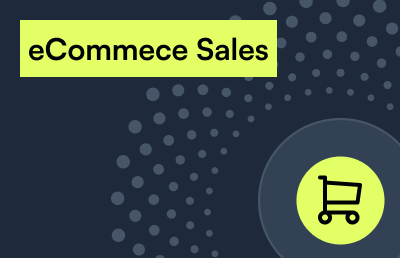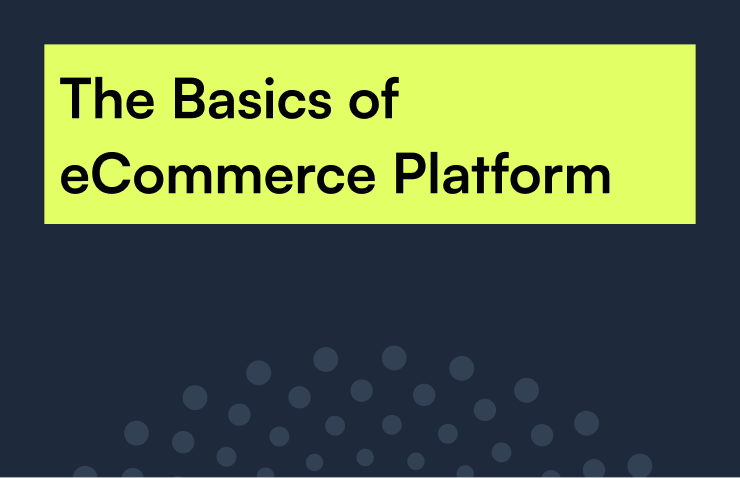Introduction
I am Melanie key account manager at Shopware with a background with 10 years experience working for a B2B industrial company.
Let us handle the question today. How does Shopware 6 support and inspire online business for the B2B shop owner and also for the customer who purchases in the Shopware B2B shops? So jumping directly into our admin panel of Shopware.
 Generally, we’ve prepared having a standard Shopware for the whole community to one an online shop based on configuring and filling in fields within the admin panel. So you can configure products, create CMS pages, decide on promotions within this admin panel without needing HTML knowledge or other developer knowledge. So, customers who are just starting their business can run an online shop. But there are also companies out there that work with big ERP systems, PIM systems, and CRM systems so that they’re integrated with Shopware so that they don’t need to create and configure the products manually. They just get the data from the ERP system or the image data from the PIM system.
Generally, we’ve prepared having a standard Shopware for the whole community to one an online shop based on configuring and filling in fields within the admin panel. So you can configure products, create CMS pages, decide on promotions within this admin panel without needing HTML knowledge or other developer knowledge. So, customers who are just starting their business can run an online shop. But there are also companies out there that work with big ERP systems, PIM systems, and CRM systems so that they’re integrated with Shopware so that they don’t need to create and configure the products manually. They just get the data from the ERP system or the image data from the PIM system.
Technology Review
So Shopware there may have a quick deep dive into the technology behind Shopware, so you can run Shopware on a standard storefront which we deliver out-of-the-box. Which we have we’ll have a look later on as well. You can also decide for running Shopware and integrate PWA storefront or any other frontend so you can use Shopware admin but a different storefront. Well, that we created and stored API for all these user experience topics. On the other side, for integrating all ERP systems, PIM systems, whatever you use there’s an API, admin API and a sync API for fast requests. We decided to go with Symfony and VueJS. There are so many developers out there, worldwide, which use these technologies so it’s quite easy and fast to onboard new developers how to, well, work with Shopware.
B2B vs B2C Setup
Running B2B and compared to B2C doesn’t mean it’s completely different everyone needs products, everyone needs some content to explain the products and the company history or something similar. Everything is based on one admin panel, but they are small functionalities that are more important for B2B than B2C. Well, in general. It’s up to you. It’s your decision to run one storefront, for example, such as a storefront for handling B2B business and B2C business. Or, if you have different storefronts for each.
If you decide for one storefront, as created here in my demo shop, then it’s important to manage your business properly. In Shopware, we call it Rule Builder so you create conditions: if something happens… if the customer’s coming from the US then something should happen. So you create the condition, when something should happen, and later on in the action itself for which kind of people it is visible now. So in Shopware, showing you one example, that means you easily create conditions by choosing the things you want to advertise… could be also like if the customer is a woman and if she hasn’t age between 20 and 50 then she get a better price, of course.
So also in our B2C versus B2B example, if the customer belongs to the customer group merchants, then please show net prices. If the customer belongs to the customer group “standard B2C”, please show gross prices on the storefront. So these small but important things are easily managed here.
Could also be possible, you’re still stuck in the B2B area where customers are still used to check the phone for placing an order, or send a fax, or confirming and quotation, which are prepared in advance. For these things, what could be the answer: convince your customer to use online shop. Or you accept and create an order within the admin panel to have within the same system. If you’re using an ERP system for that then you just use the ERP to move the order data.
Shopping Experiences
Well, also B2B shops should have nice content to explain the company to explain a complicated product. So also here, if you should have a quick look to CMS tool – we call it shopping experiences. So it’s all based on drag and dropping elements, so drag and dropping, for example, a video file in here. And then deciding which YouTube link you want to add, so making some settings. In my example here, I created a text field with a background image having these mountains, which I found on the promotion of the webinar series, for example, creating a text.
Rule Builder
With regards to the rule builder logic once again you can decide which element shall be displayed for which kind of persons in your shop – which kind of target group. If you have a fancy Black Friday banner, which is more related to B2C instead of B2B, for example, you can also use the rule builder again. Like all customers which belong to the customer group, merchants, don’t see the banner or even should see the banner. So in here also, you can decide for different content based on the target group in your shop.
Also quite new our latest release we also activated the option for price visibility and category visibility. Using the rule: if the customer is from Canada, then please don’t show the products, which are only a top seller in the US, for example. And also this logic, I mentioned accidentally, price was yes, of course you can also run different pricing for different customer. So each product price can be special for the customer. Also again, you go to the the product Advanced pricing tool that means you say, OK, let’s say all merchants should have this price, but all… Well, maybe you can say, OK, it’s Sunday, then it should be another price, or if the customers are coming from the USA, so here you can one for one product different pricings. So that’s the whole, um, secret about the admin panel, filling in some things to be visible.
Front End
OK, let’s maybe skip the admin part for a while and having a closer look at the storefront. What fancy features do your customers want? What is beneficial for them using your shop instead of the shop of your competition? So let me introduce my fancy demo shop; I’m selling tools, wood screws and dowels. Typically do-it-yourself store, for example. So I’m logging in as a customer. Let log out first to show you.
I just created a fake example, a customer, it’s John from Kiwi buildings. He’s the main admin – as a customer. So every customer has a customer number in the admin panel like the admin John. But John also wants to allow other colleagues to purchase in the shop without giving out his login data. So he can create and work with rules and budgets and contingents, so we can create some contact which shall be able to put into the shop with different rights and budgets.
And here I just created the example, OK, we have different locations California, Arizona and Colorado. They are also employees located, which should use the shop so you can start saying, OK, every employee he works from the location California there belongs to the budget: 500K. Arizona, I just created 600k for Colorado 400k. Same with a position not every employee has the same position and should have the same rights. So, for example, the construction managers the project managers there should have different rights. So I created Katie as a contact. So if she logs into to the shop, she has different conditions than John. I allowed her to do more or less everything, so let me see and content management. She has all rights, so no restrictions. Different to the mechanical engineer, in turn. Sam is just able to purchase something from the category screws, and so it’s sort of expensive things, wood and tools sort of restricted for him, so only in emergency cases, you can buy these small parts. From the left to the right, so John has special access to this dashboard.
Permissions
If I would have mentioned it before, so you can decide which customer… B2C customer does not need all these dashboards… and you can easily mark the checkbox B2B dashboard so that the customers. These functionalities are prepared to make it easy and fast for the customer to purchase in the shop. So for me as, John, I don’t want to see nice banners everywhere. I don’t want to go from category to category.
I want it fast. Explaining you from that left to the right. Company: I already explained it – kind of. So you also have kind of statistics if you’re what kind of things your colleague’s purchases, everything in line. So the main admin should be aware of that.
And we have an order overview, you know, a normal order overview nothing special about it, but maybe having a look to order clearances. So here, Sam, my intern try to purchase a really high value, which he was not allowed to purchase, so he tried to order some tools. He was able to to to to submit the order, but it’s not submitting the order. It’s more like we ask for clearance, so it’s not sent to the to admin panel of the shop owner yet.. Now it’s stuck with admin John, who I was going to accept the order or to change it because Sam was not supposed to do that.
So now, if we change it, we can go buy one is enough. And now if we Submit the order now, now you are in the checkout process, as John, to finalize the order. So that’s, by the way, the one page checkout. We especially created to try to make it easy and have a good summary of everything in one page. Yeah, I’m using the Arizona budget for this order now. I can also change the reference to “it is an emergency”… that’s why I accept them to do it now. And now if I can clear the order, that order will be delivered to the shop owner.
OK, let’s go back to the shop. Let’s go back to my dashboard. So order lists, this is a good example, you can use it as a draft. Well, it’s a wish list or you let the says representative of the shop owner created for you. So to make it simple for you as a customer to just press the order button. So my stupid example world again, every intern gets two drills. So it’s easy to use it as a draft to just put it to the shopping cart with one click. Or, there’s a new project in this case Children’s Hospital Arizona. The the project manager already created. How many? How much would we need? How many to it’s to to prepare in advance?
Quick Order
My personal favorite tool in here, thinking at my previous company, these order functionality is considered to make it as simple as possible to place your order. Many companies use Excel sheets to to create quotations – or something like this. So in this part here, you can easily drop the whole Excel sheet. Maybe it’s a it’s an export of all products in the shop, so you just need to use this Excel sheet, add a column for for the quantity. Change the price. You define the price with a comfortable with the DOT. I know it’s different between the UK and Germany, for example. So you mentioned here and then you just drag and drop a file in here. So, with one click. That means you have a whole order added to the shopping cart just by changing the quantities of such product export. Or, you know, the products, you have them in your mind. You don’t want to use a search, don’t want to click to the categories, then you just type in the quantity of the product, which you want.
So, things to make it fast. Quite similar to this, you might be or John might be a retailer, then it’s also possible to synchronize the product number of your own shop or your own catalog with with the products in your shop. So if I check for the drill again, so here it’s call Drill 300, and I’m a retailer, I’m having my own explanations. So next time I go to the shop, I can just put my own catalog name in here to place an order, so synchronization. Also, a fast way to simplify a placing or putting something into the shopping cart. This part here is another product listing, so as you know, from all B2C shops as will benefit and yes, now you can switch to table view, so you know, the products you buy there every month so you don’t care about the description and the image, then you switch to tab of you. And now you have the whole category listed as matix. Just type in the quantities and with one click all of them are added to the basket. Took a while, but now here, the off canvas shopping cart appears.
We use the off-canvas cart to complete so that you can stay in the story, you can stay in the category. You can may decide to change the quantity if you made the mistake. And now with one click, you go back into store. We don’t need to get guided to the different, to a different page.
Quotes
All right. So, I missed the quote part. So the last but not least and in the B2B dashboard, So now you see, instead of submitting order, there’s a button “request a quote”, if you go through this process, you could ask for what do you want? Absolute discount, or a percent percentage discount. Let’s go for twenty, twenty is good. And can leave a comment. And submit an offer request. And now. They are sent to the shop owner. There’s another quote running already. It’s now in the back to the admin panel. You will find a tap offer, or quote, that’s better set a wording, you see here now you have the shop owner can accept the quote, you can modify the quote, giving only 10 percent and send it back to the customer. Then it’s a kind of negotiation between a customer and shop owner between admin panel and his customer account until someone clicks on a accept. Well, by the way, how does a new registration in the shop You, as a shop owner, again understand if it’s a B2B or B2C if you want everything in the same, for this question, I created a form in the admin panel. So if someone wants to get marked as a merchant, for having net prices, maybe a dealer price included, he can accept, so he can ask for getting the access to the B2B dashboard.
Well, by the way, how does a new registration in the shop you, as a shop owner, again understand if it’s a B2B or B2C if you want everything in the same, for this question, I created a form in the admin panel. So if someone wants to to get marked as a merchant, for having net prices, maybe a dealer price included, he can accept, so he can ask for getting the access to the B2B dashboard. Created another banner in here with a nice button, which guides me to the contact form. So if he leaves his data in here, then the shop owner is able to to check and qualify if he is really a merchant, a dealer or whatever, which belongs to the customer group merchants.
If as long as you get not accepted, he will be in the standard customer group, which is a default group within the section in settings. And then it’s up to the shop owner to mark it, having a quick look to the customer for the last minute. So if I go to my customer, John. It’s up to you to mark him as a Debtor, Debtor is the wording that I use as an admin, so the main user which has the dashboard, the access to the B2B dashboard. So instead of mocking his Debtor, if not, then everyone would have a usual customer account, as you know, from other shops. Or you mark him, as I said, as sales representative.
Sales Rep Interface
The world is changing again now. John is not a customer. No B2B and no B2C customer. Now he’s an employee of the shop owner. Now your sales rep. So if he logs in next time. So let me save it. And, OK, now he can give them some customers he should take care of. So if John logs into the shop once again. It’s a changed situation now. He sees his order overview. We do it again. So now he can travel to the customer sitting with them in a meeting, discussing the quote, preparing an order list for him by logging in as a customer. He does not need to ask for the credentials of the customer, so he gets the allowance to log in as a customer to help him place an order, creating some context. So for not letting the customer alone.
So, yeah, you see, there are many opportunities. How to deal with the B2B suite and also to manage the shops. So that’s a quick summary, I would say. I don’t want to be set up again, so as a summary, I would say decide for wanting a to enter B2B shop in the same set channel or create separate ones in the admin panel. It’s up to you to integrate an ERP or PIM system. So there’s a flexible API structure. Shop there so that you should be able to connect to entities quite easily together with your agency.



